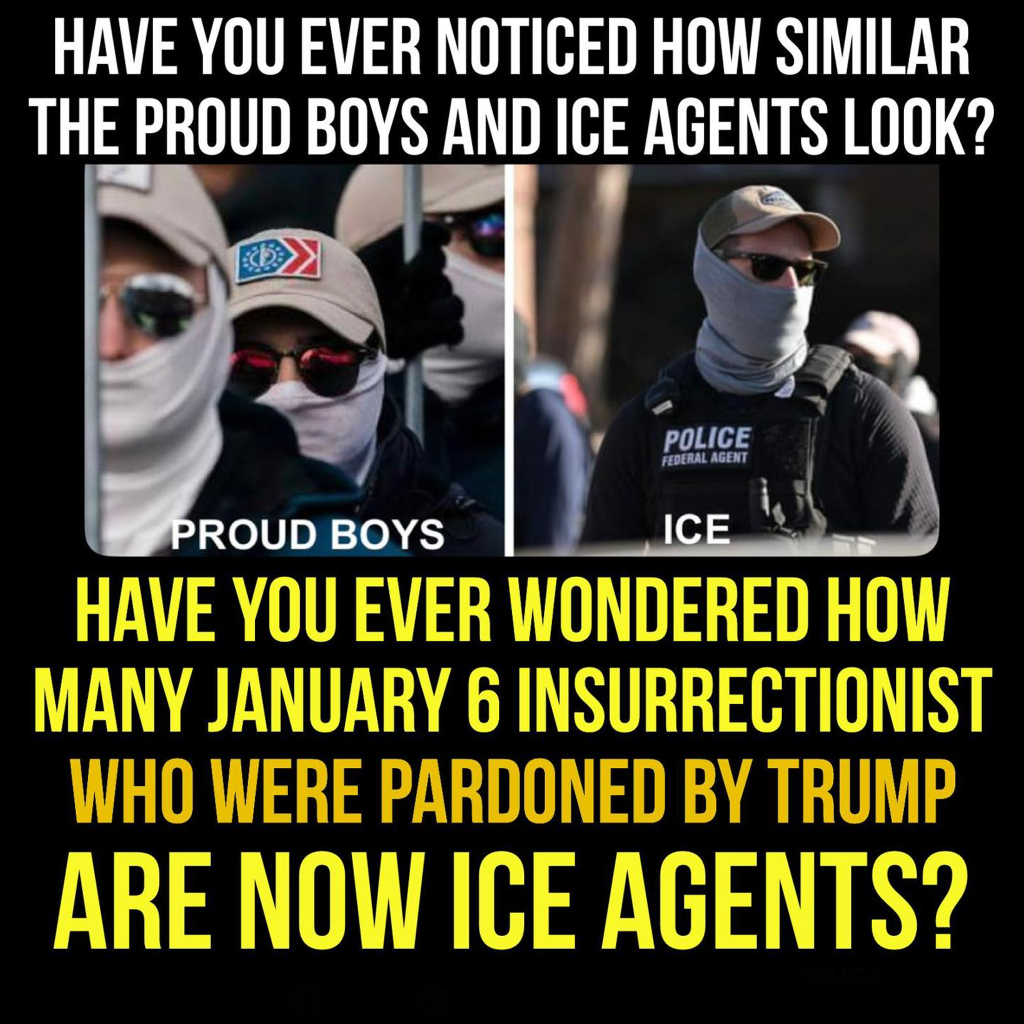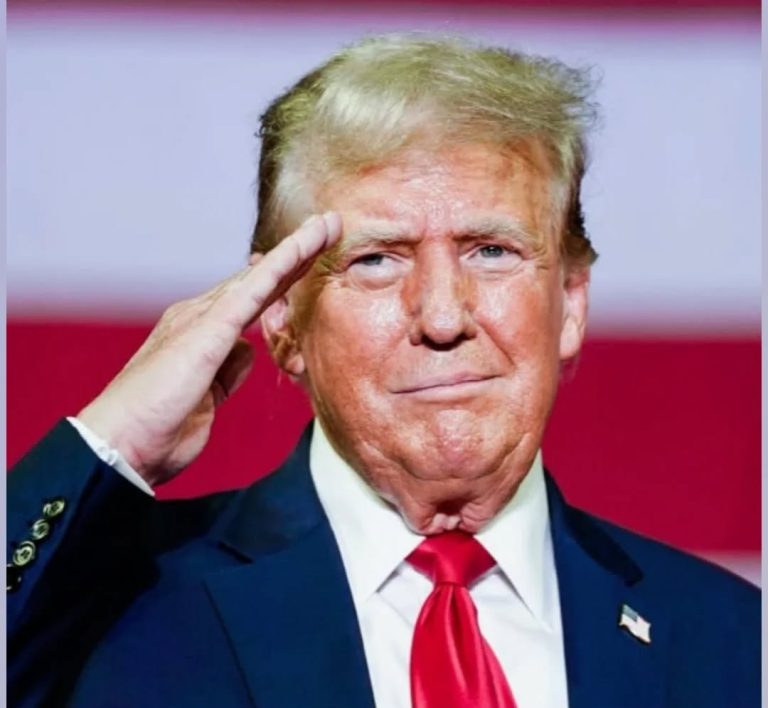
A striking image circulating online has ignited discussions about the blurred lines between far-right extremism and government authority in the United States. The graphic juxtaposes two groups: the Proud Boys, a far-right organization linked to the January 6 Capitol insurrection, and U.S. Immigration and Customs Enforcement (ICE) agents. Beneath the bold text—“HAVE YOU EVER NOTICED HOW SIMILAR THE PROUD BOYS AND ICE AGENTS LOOK?”—the image poses a loaded question: “HOW MANY JANUARY 6 INSURRECTIONISTS WHO WERE PARDONED BY TRUMP ARE NOW ICE AGENTS?”
Visual Parallels and Symbolism
The image’s power lies in its stark visual comparison. Both groups are depicted in militarized gear, often seen in viral photos from protests or enforcement actions. The Proud Boys, known for their black-and-yellow attire, and ICE agents, frequently photographed in tactical uniforms during deportations or raids, share an aesthetic of paramilitary readiness. This similarity has fueled critiques of law enforcement’s increasingly militarized appearance and raised concerns about ideological overlaps.
The January 6 Connection
The image’s second provocation—a question about pardoned insurrectionists joining ICE—taps into broader anxieties about accountability. Former President Donald Trump pardoned several individuals convicted of crimes related to the January 6 attack, including members of extremist groups. While there is no verified evidence of pardoned rioters becoming ICE agents, the implication underscores fears that extremist ideologies could infiltrate federal agencies. Critics argue that lax vetting processes or political appointments might enable such scenarios, though ICE maintains rigorous hiring standards.
Reactions and Realities
Civil rights organizations have long warned about far-right sympathizers within law enforcement. A 2020 report by the Brennan Center for Justice highlighted instances of police officers participating in extremist groups. ICE, tasked with immigration enforcement, has faced accusations of excessive force and politicization, particularly under administrations prioritizing aggressive deportation policies. The image’s question, while speculative, reflects legitimate concerns about institutional trust and the potential for ideological alignment between extremists and authorities.
ICE has repeatedly denied affiliations with extremist groups, emphasizing its commitment to “professionalism and integrity.” However, the agency’s opacity regarding disciplinary records and hiring practices leaves room for public skepticism. Meanwhile, the Proud Boys, designated as a terrorist group in Canada and New Zealand, continue to face legal scrutiny in the U.S., with leaders convicted of seditious conspiracy for their roles in January 6.
The Bigger Picture
This viral image is less about literal accusations and more a commentary on perceived systemic issues. It challenges viewers to interrogate how symbols of authority—uniforms, gear, and government power—can mirror those of domestic extremism. It also questions whether political pardons might embolden individuals to seek roles in institutions that wield significant power over vulnerable populations, such as immigrants.
Conclusion: Accountability in Focus
While the photo’s claims remain unproven, its viral spread underscores a demand for transparency. Ensuring that law enforcement and federal agencies remain free from extremist influence requires rigorous vetting, independent oversight, and public accountability. As debates about democracy and security intensify, images like this serve as a reminder: the line between upholding justice and perpetuating oppression often lies in who holds the power—and how they use it



